The Uffizi Gallery
Back to Italy 2016 Index
Galleria dell'Accademia
Florence - Around the City
Il Duomo
The building of Uffizi complex was begun by Giorgio Vasari in 1560 for Cosimo I de' Medici
so as to accommodate the offices of the Florentine magistrates, hence the name uffizi -
"offices". The Uffizi brought together under one roof the administrative offices, the
Tribunal, and the Archivio di Stato - the state archive. A project commissioned by Cosimo I de' Medici,
Grand Duke of Tuscany, planned to display prime art works of the Medici collections in
the building; the plan was carried out by his son, Grand Duke Francesco I. He commissioned
the architect Buontalenti to design the Tribuna degli Uffizi to house a series
of masterpieces in one room, and was a highly influential attraction of the Grand Tour.
Over the years, more sections of the palace were recruited to exhibit paintings and sculpture
collected or commissioned by the Medici. According to Vasari, who was not only the architect
of the Uffizi but also the author of Lives of the Artists, published in 1550 and 1568, artists such
as Leonardo da Vinci and Michelangelo gathered at the Uffizi "for beauty, for work and for recreation."
After the house of Medici ended, the art treasures remained in Florence by terms of
the famous Patto di famiglia negotiated by Anna Maria Luisa, the last Medici heiress, forming one of
first modern museums. The gallery was open to visitors in the 16th century, and opened to the public in 1765.
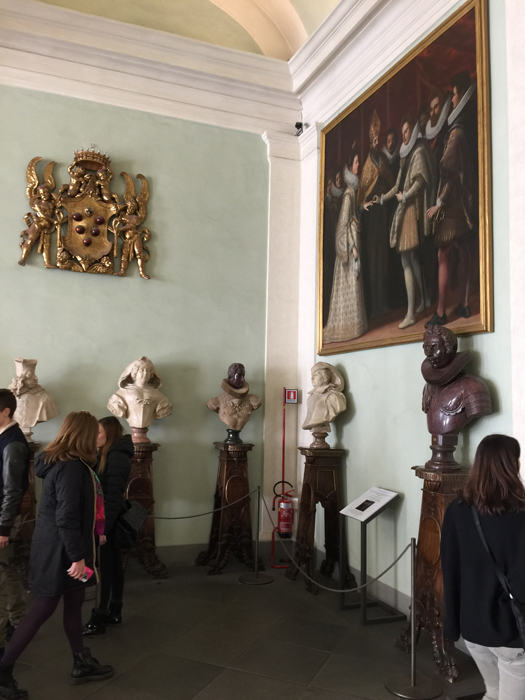 |
| The
entrance foyer of the Uffiizi Gallery, just after passing the bag
scanning station. All museums now have airport-type security to
prevent vandalism and terrorism. |
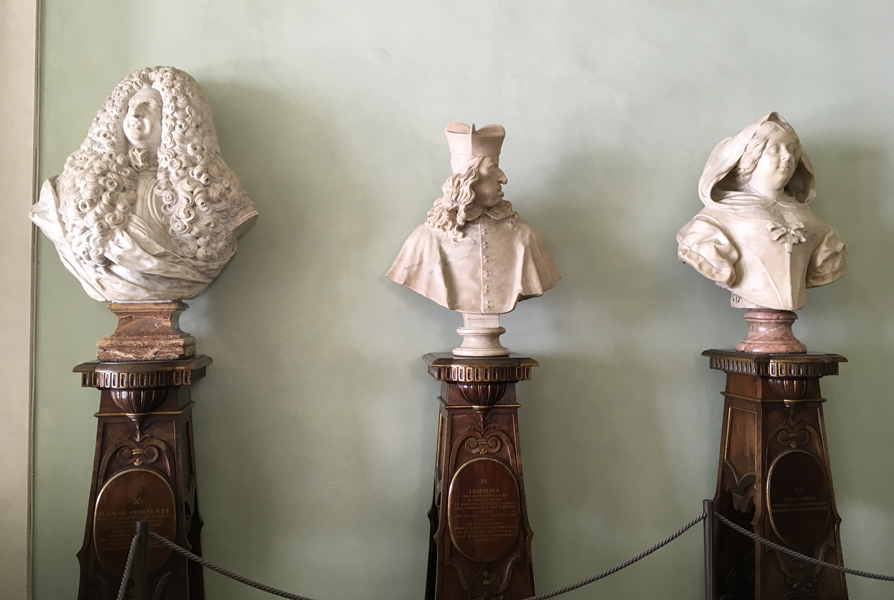 |
 |
| Entering the Eastern Corridor on the second floor. |
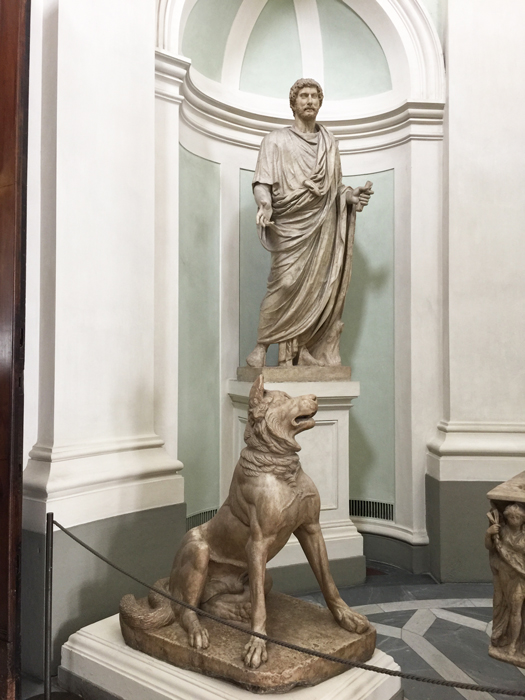
| 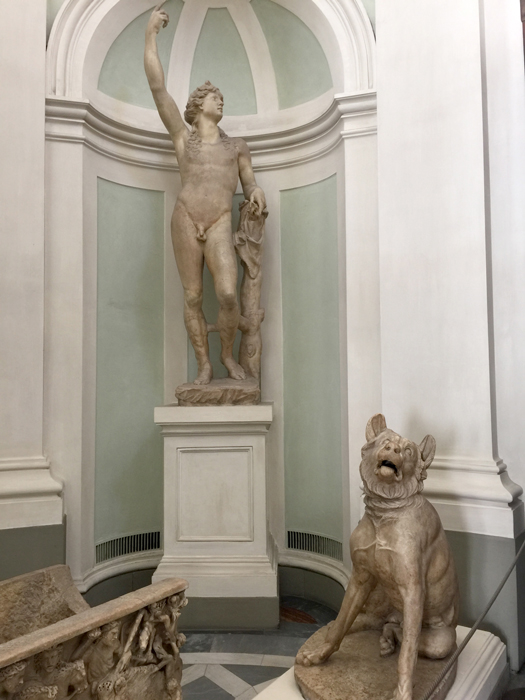 |
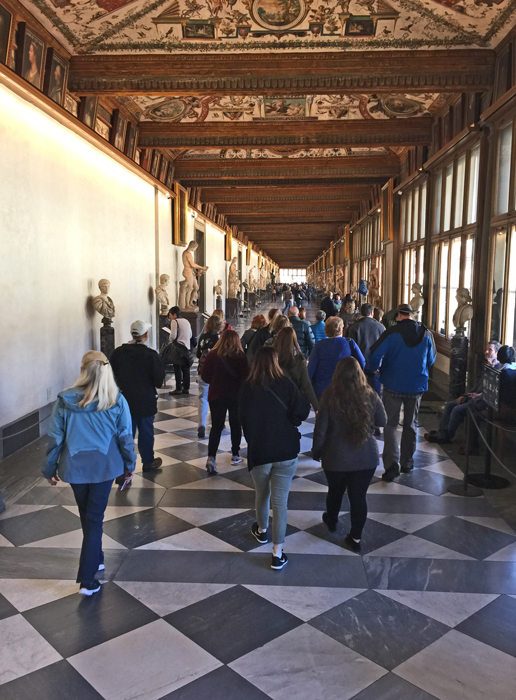 |
| The
Eastern Corridor is so long it almost vanishes in the distance.
There are incredible ceiling paintings between the beams in the ceiling. The exhibit halls open into this corridor. |
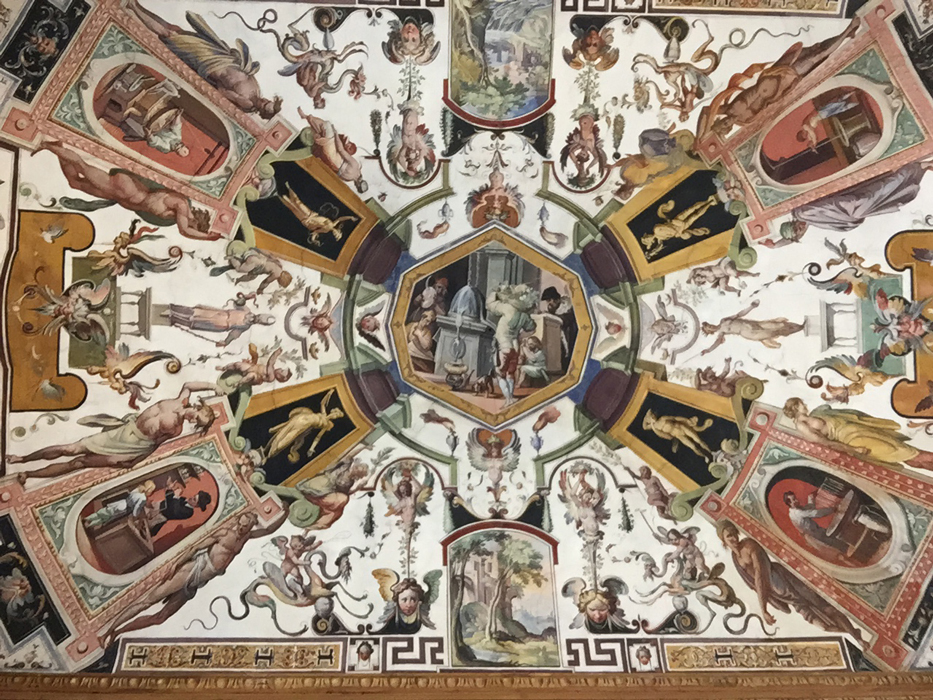 |
| Every ceiling panel is different, and beautiful. |
Statuary in Eastern Corridor
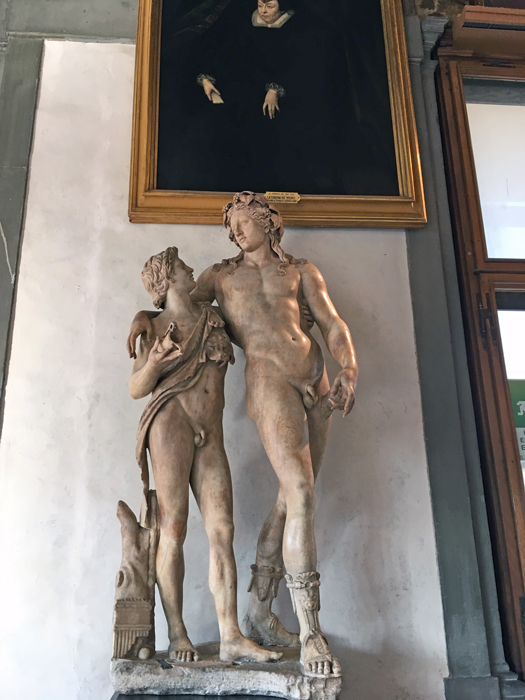 |
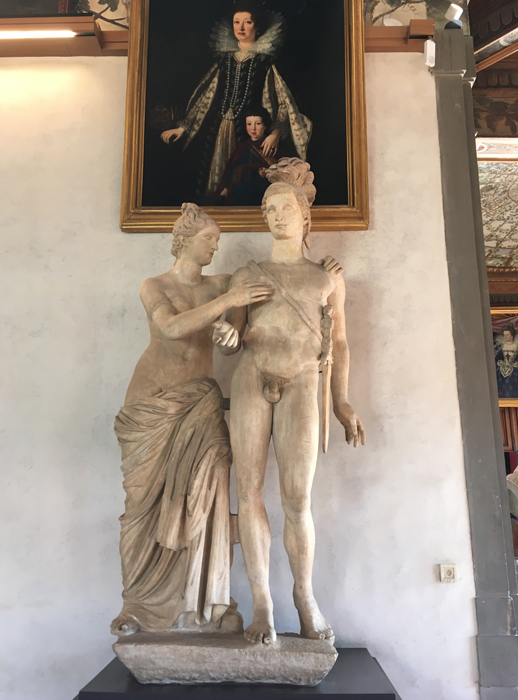 |
 |
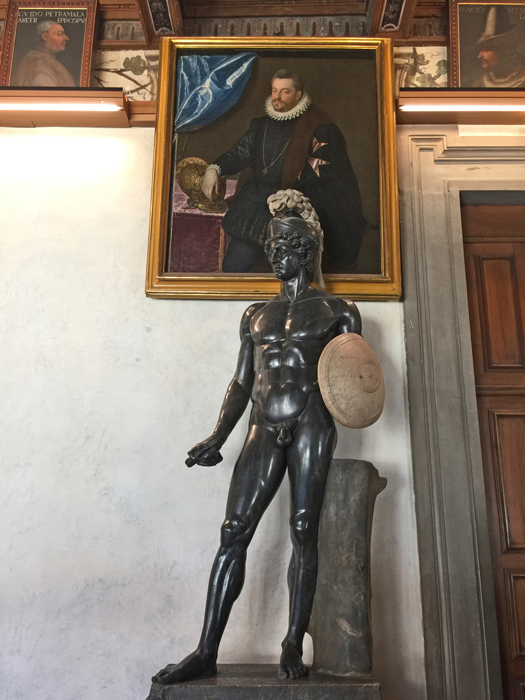 |
| Portrait of Ferdinando I de' Medici. |
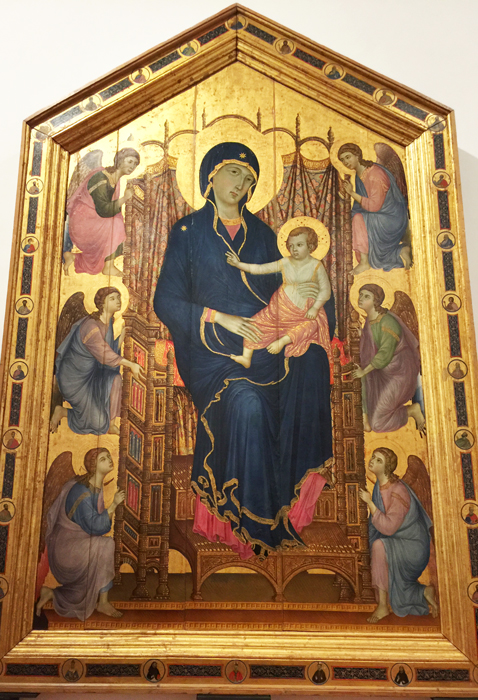 |
| Duccio
was the most important representative of the Sienese school of painting
that focused on the importance of color and decoration over drawing.
His Maestą, also called the Madonna Rucellai, was painted in 1285. |
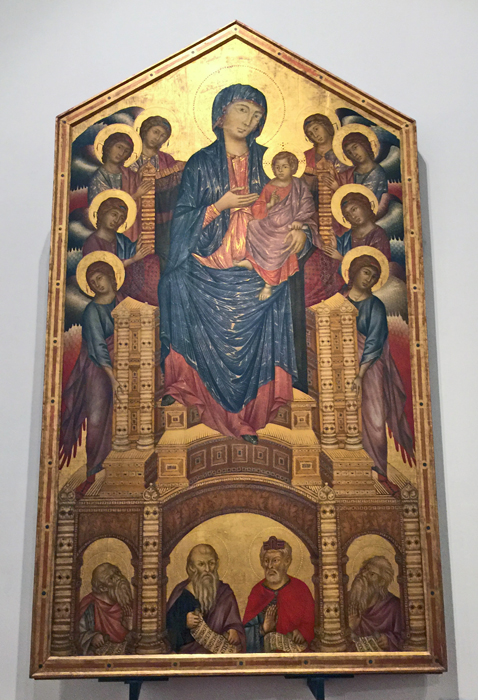 |
| Cimabue
is considered the last Italian artist to be influenced by Byzantine
art. In his tempera on wood known as Maestą of Santa Trinita, painted
between 1280 and 1290, you can witness that something is changing. The
throne with its wide base where the four prophets and a mighty Madonna
rests her leg on the upper step foreshadows the spatial experimentation
his apprentice, Giotto, would become famous for. |
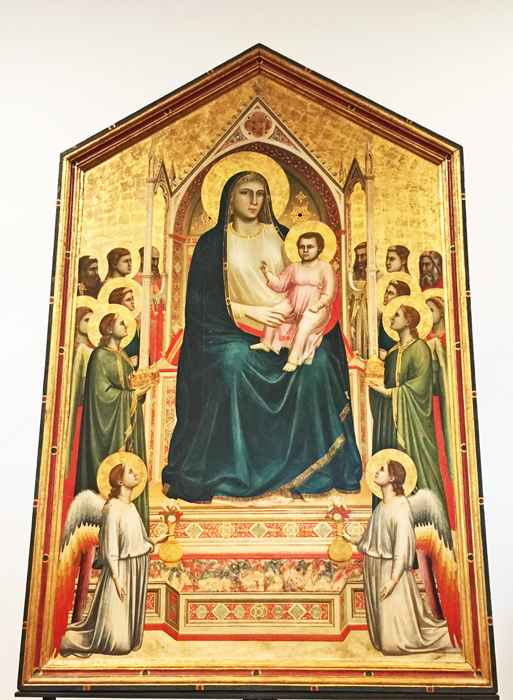 |
| Giotto
is the true originator of modern painting, paving the way for the
Renaissance. His Maestą, known as the Madonna di Ognissanti, painted
around 1310, is completely different from Duccio’s or Cimabue’s. The
Virgin sits on a throne that gives space a shape and creates a
“perspective box” where figures are physical, and finally, humanized.
Here, the subjects can be thought of as being real human beings, with
both a real body and soul, living in a real space, this world. |
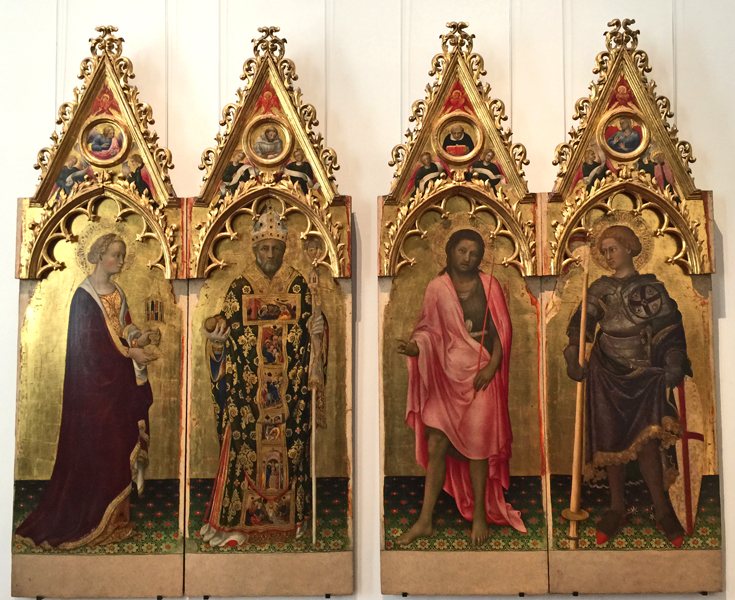 |
| On the left, two Saints From The Quaratesi Polyptych: St. Mary Magdalen And St. Nicholas, by Gentile da Fabriano. |
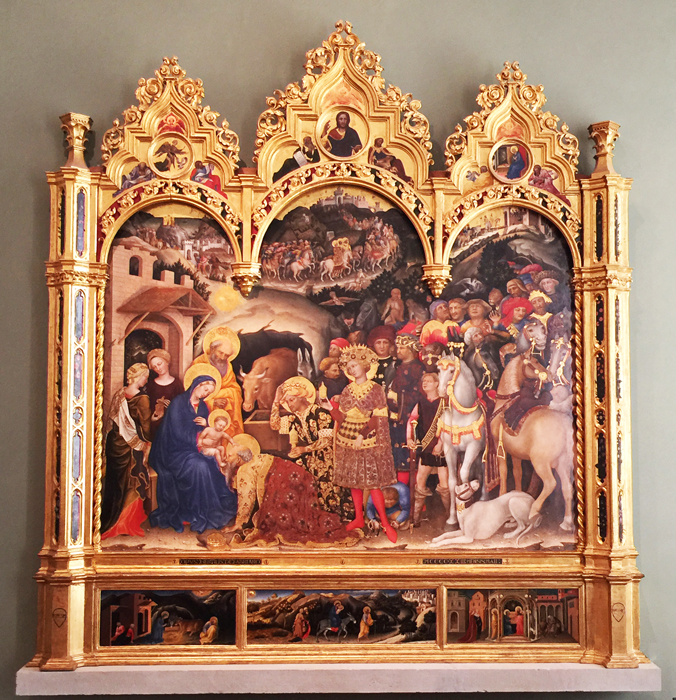 |
| Adoration of the Magi, Fabriano. |
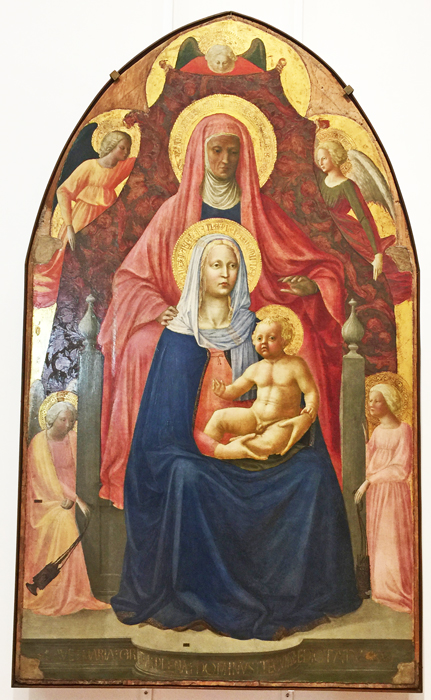 |
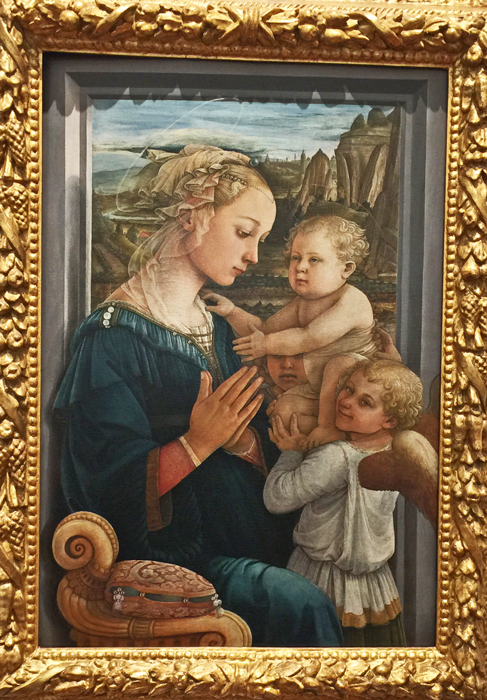 |
| This
Madonna with Child and two angels painted by Filippo Lippi around 1465
is not only a devotional painting; the delicacy and sweetness of Virgin
Mary show a new way to depict a religious subject, more and more close
to real human beauty. |
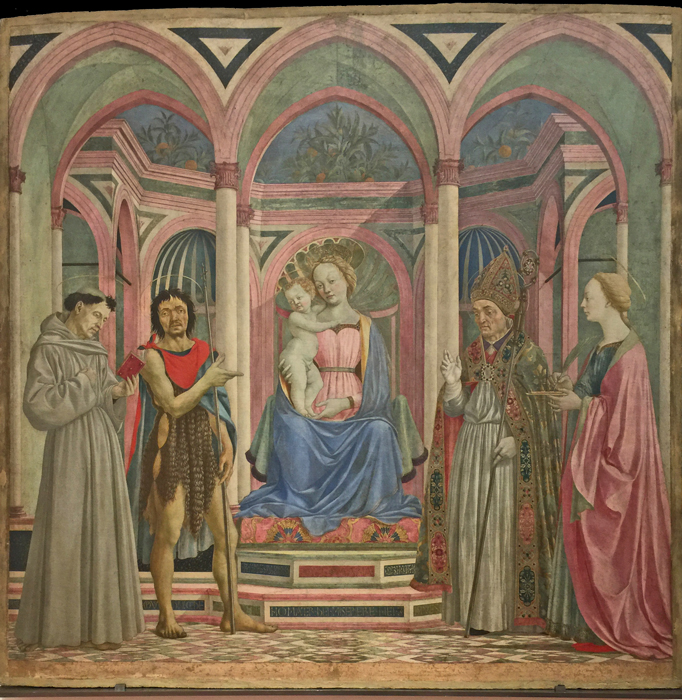 |
| The Santa Lucia dei Magnoli Altarpiece, Domenico Veneziano. |
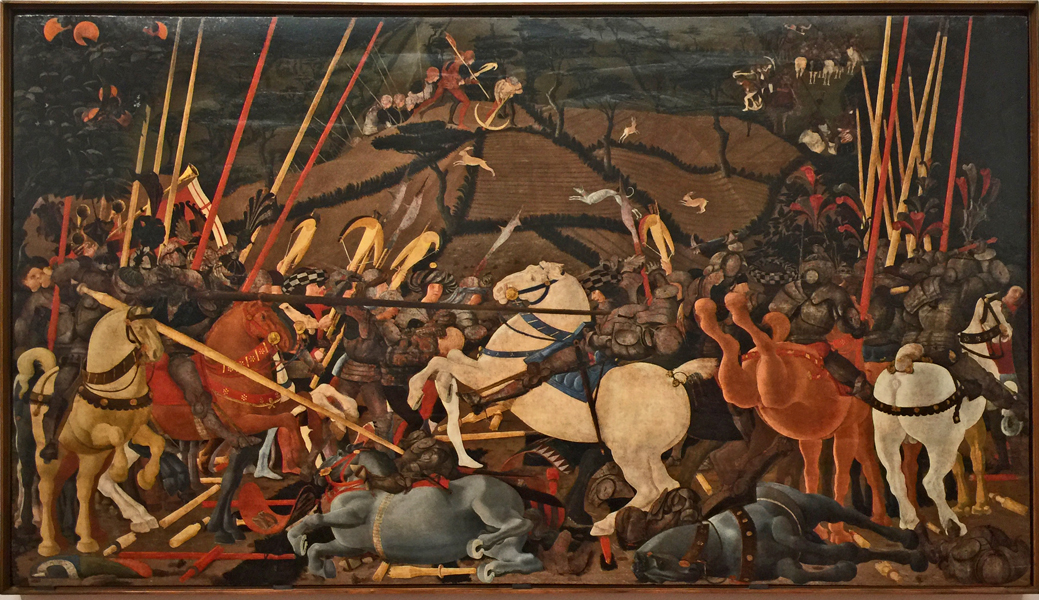 |
| The
Battle of San Romano, Paolo Uccello. The panel depicts the
unhorsing of Bernardino della Ciarda, leader of Sienese mercenaries. |
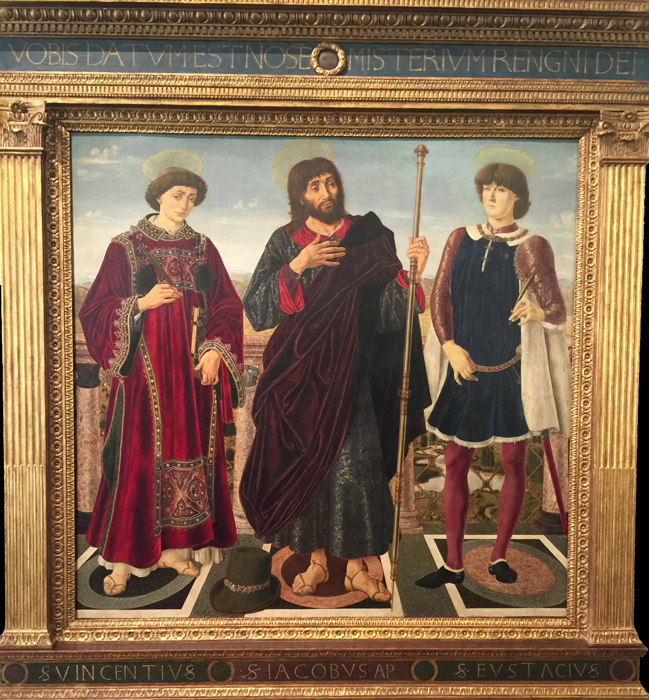 |
| Antonio del Pollaiolo - Altarpiece of Saints Vincent, James, and Eustace. |
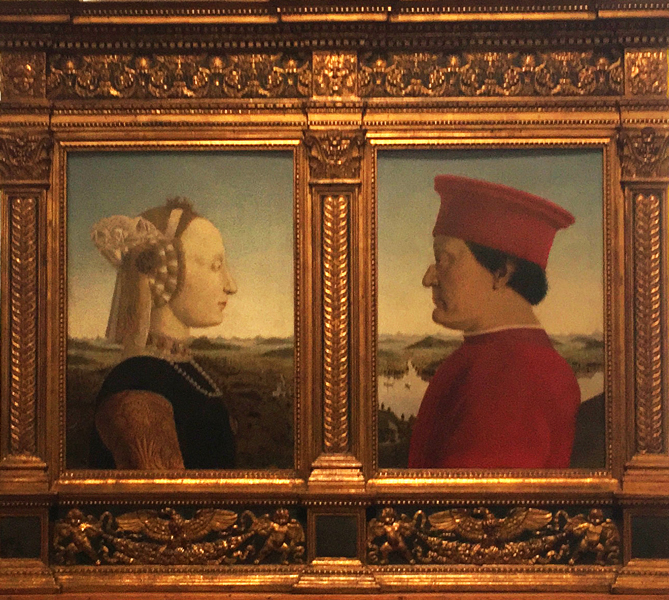 |
| The
diptych of the Dukes of Urbino is one of the most famous works of art
of the Italian Renaissance. Painted by Piero della Francesca, it
depicts the duke Federigo da Montefeltro and his wife Battista Sforza. |
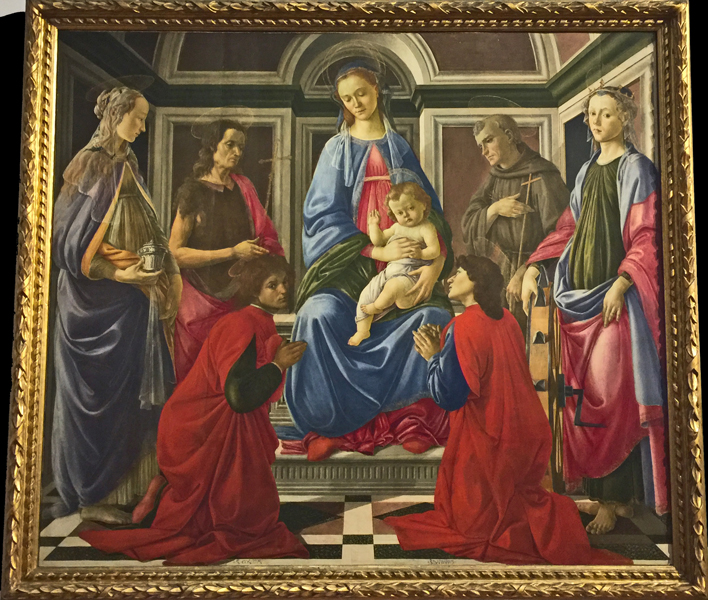 |
| Madonna and Child with Six Saints (Sant'Ambrogio Altarpiece), Sandro Botticelli. |
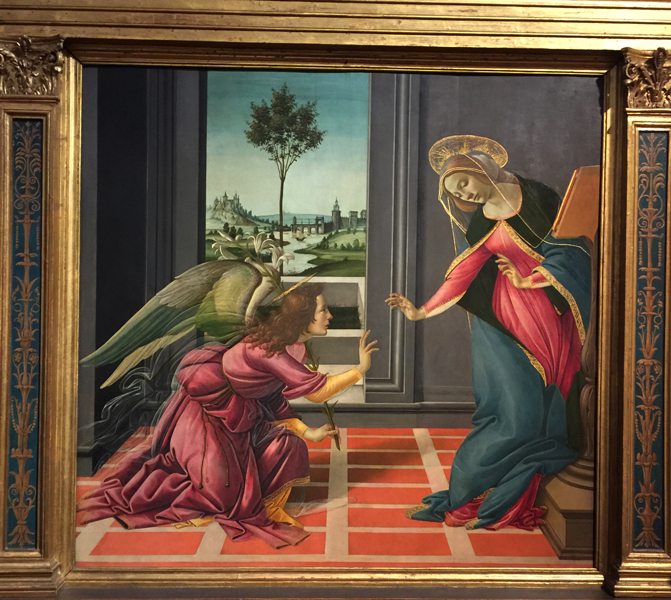 |
| The Cestello Annunciation, Sandro Botticelli. |
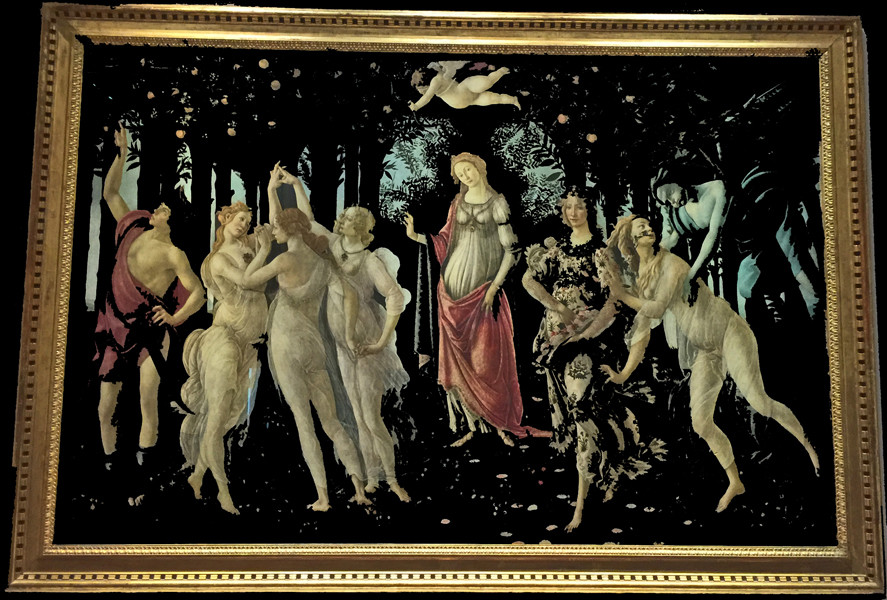 |
| Primavera - Allegory of Spring - Sandro Botticelli. |
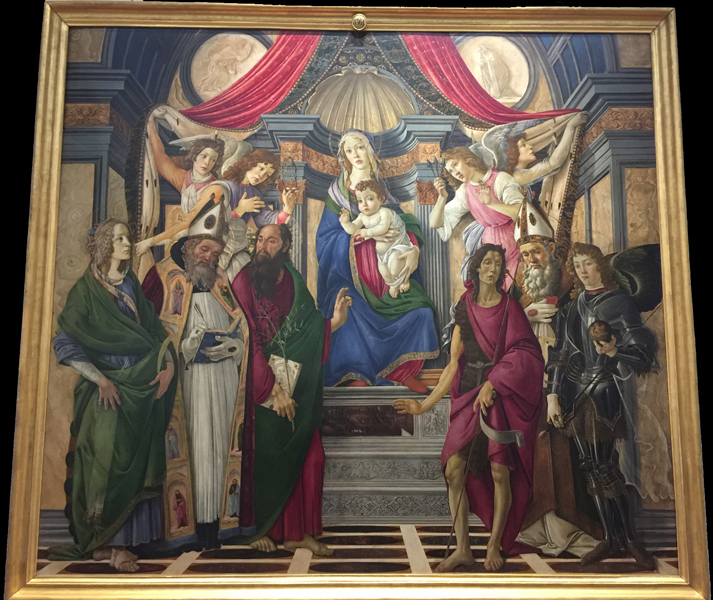 |
| Madonna Enthroned with Saints, San Barnaba Altarpiece, Sandro Botticelli. |
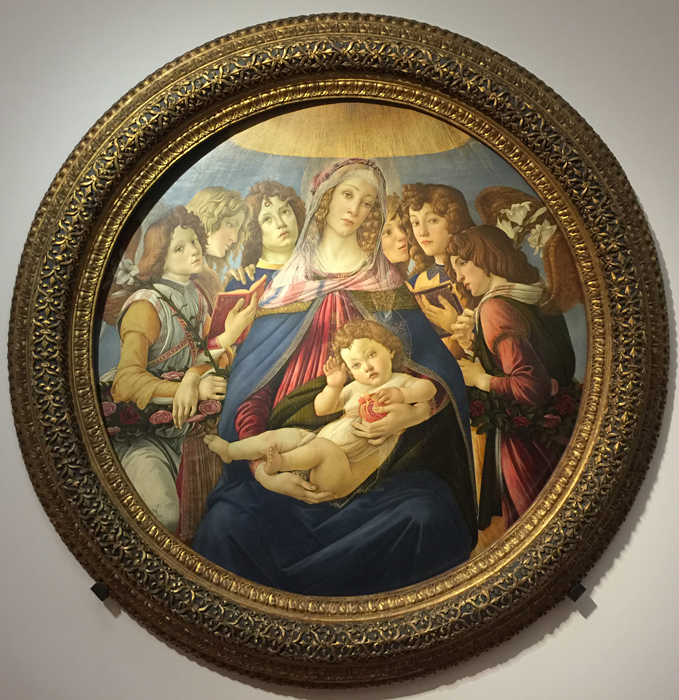 |
| Madonna of the Pomegranate, Sandro Botticelli. |
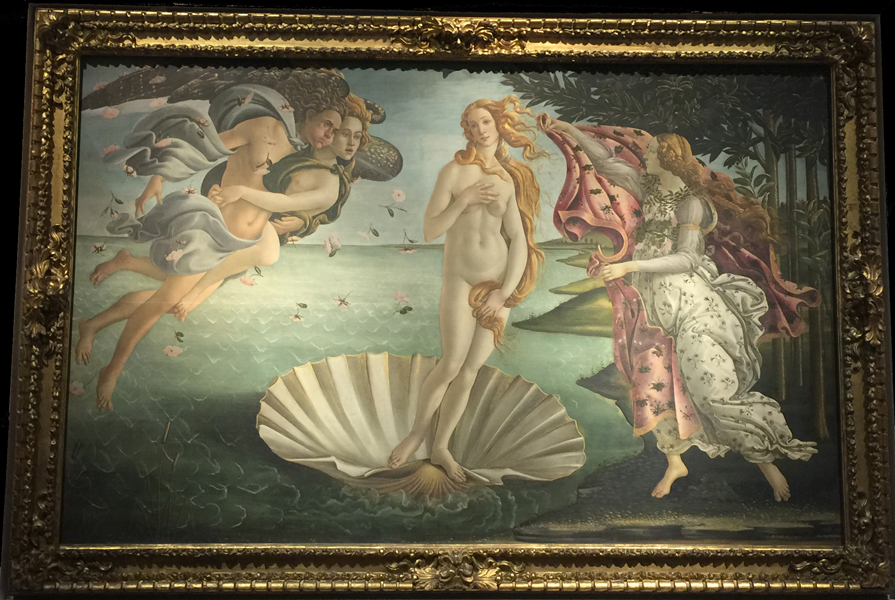 |
| The Birth of Venus, Sandro Botticelli. |
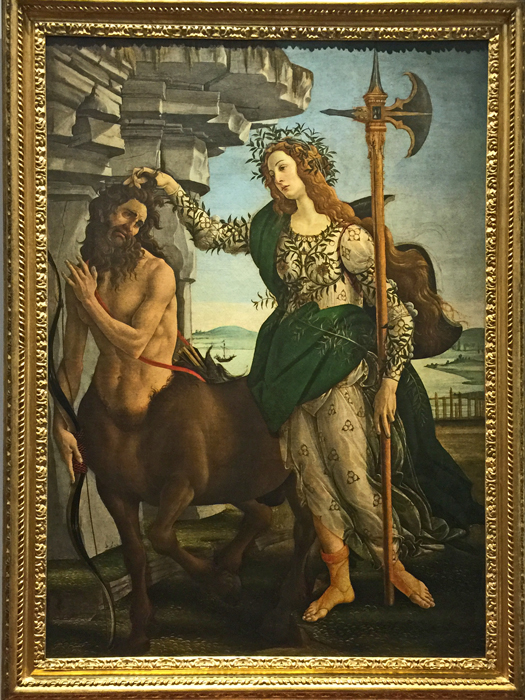 |
| Sandro Botticelli, 'Pallas and the Centaur'. |
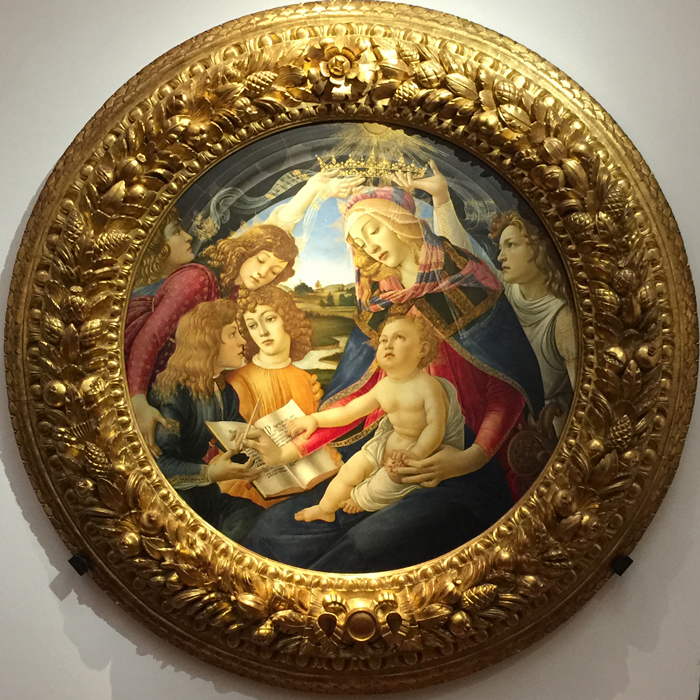 |
| Madonna of the Magnificat, Sandro Botticelli. |
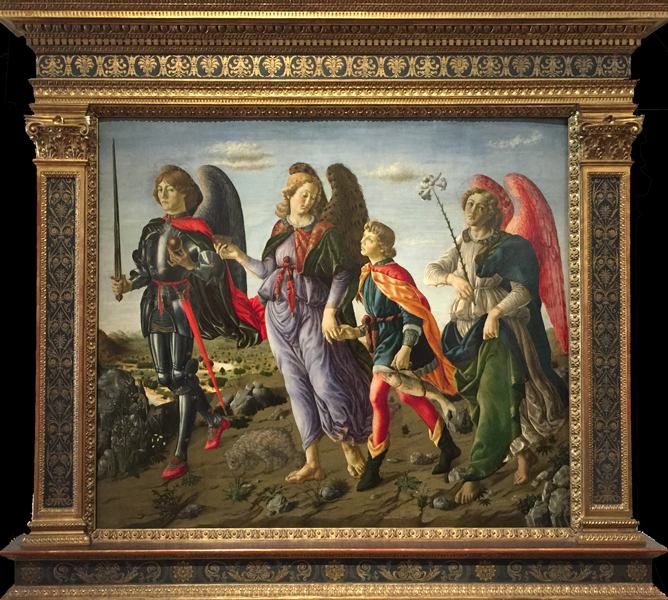 |
| The Three Archangels Michael, Gabriel and Raphael with Tobias, Francesco Boticinni. |
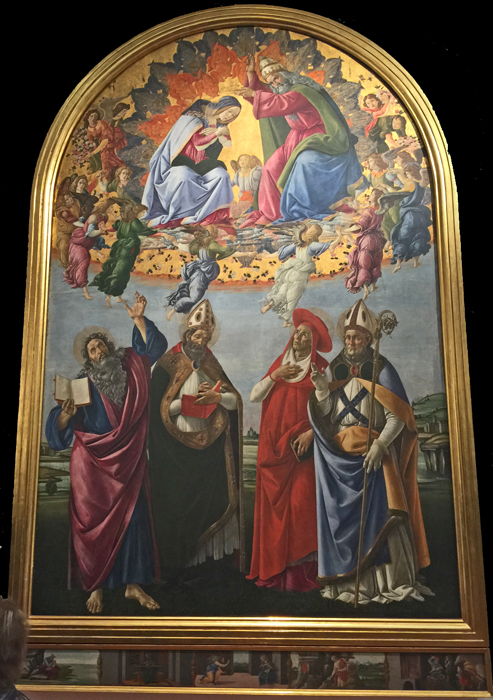 |
| Coronation of the Virgin. |
 |
| Madonna and Child Enthroned with Four Angels, Archeangels Michael and Raphael, St. Gusto and St. Zenobius - Domenico Ghirlandaio. |
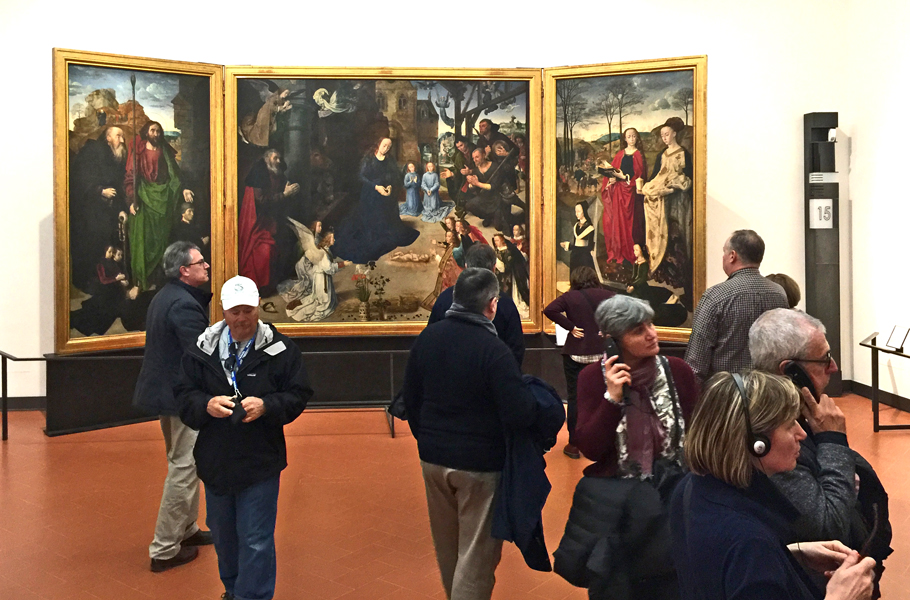 |
| Hugo van der Goes - Christ Child Adored by Angels (in the center), Portinari triptych. |
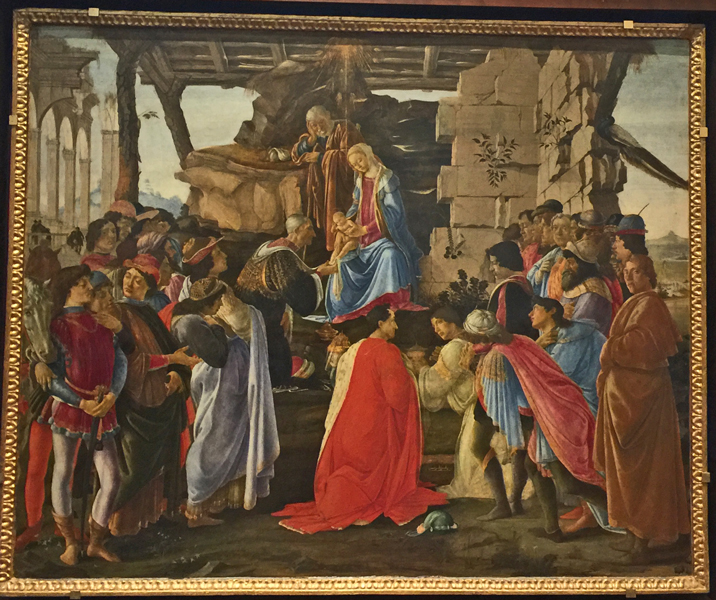 |
| Adoration of the Magi, Sandro Botticelli. |
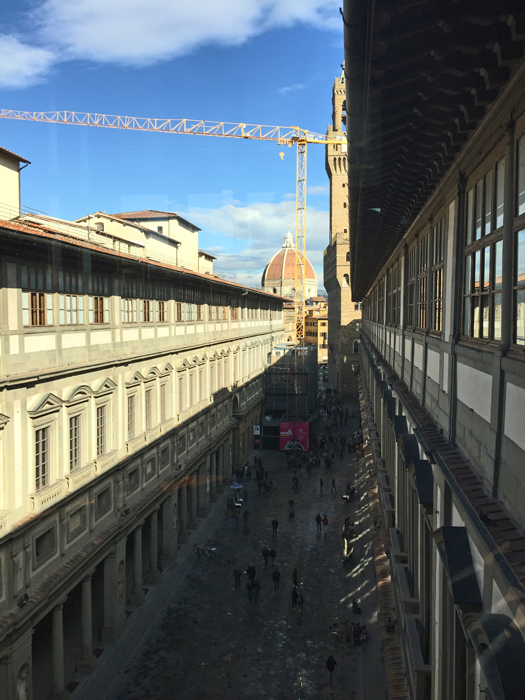 |
| View of the Piazalle degli Uffizi from the second corridor. |
 |
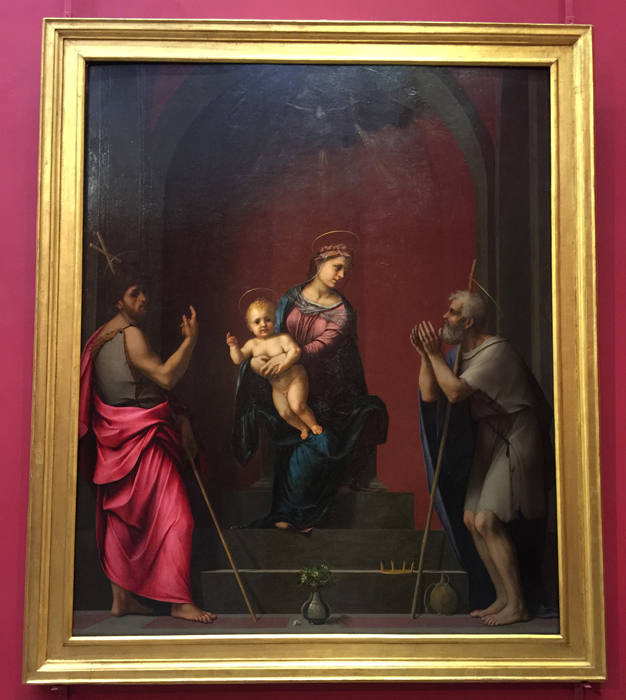 |
| Madonna with Saint John the Baptist and Job. |
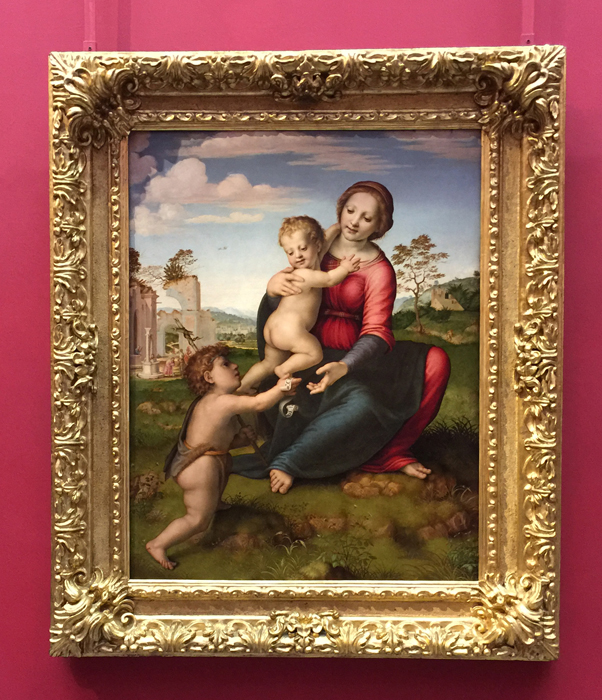 |
| The Madonna with Saint John, by Domenico Ghirlandaio. |
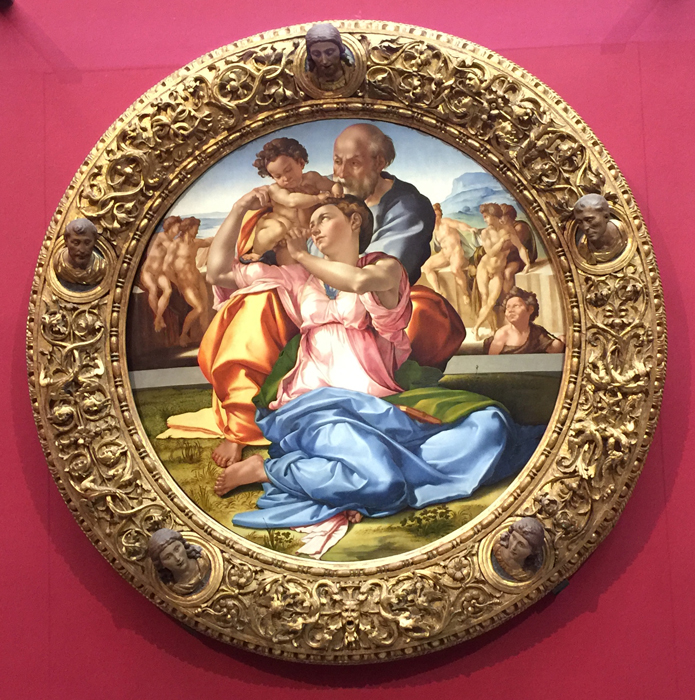 |
| Doni
Tondo, Michaelangelo. Commissioned by the merchant Agnolo Doni (either
for his wedding to Maddalena Strozzi or for the birth of their first
child), it is the only certain painting by Michelangelo. |
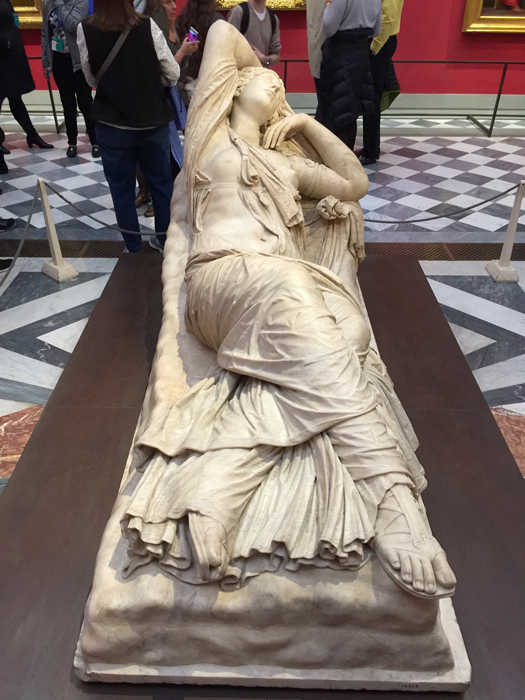 |
| Arianna Addormentata (Sleeping Ariadne), 3rd century Roman copy of a Hellenistic original. |
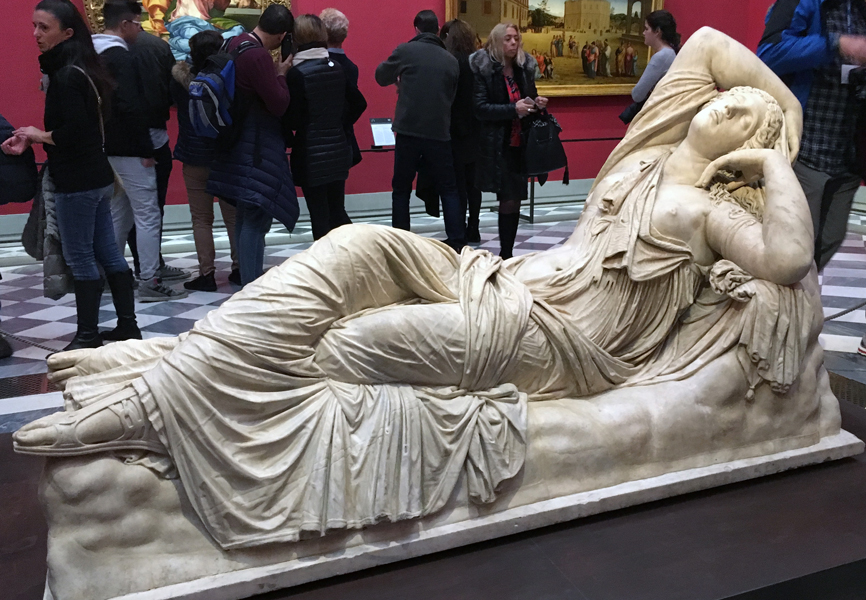 |
| It
is believed that Michelangelo admired this work of Roman art, a copy of
a Greek Hellenistic sculpture, which was discovered in Rome during his
lifetime. |
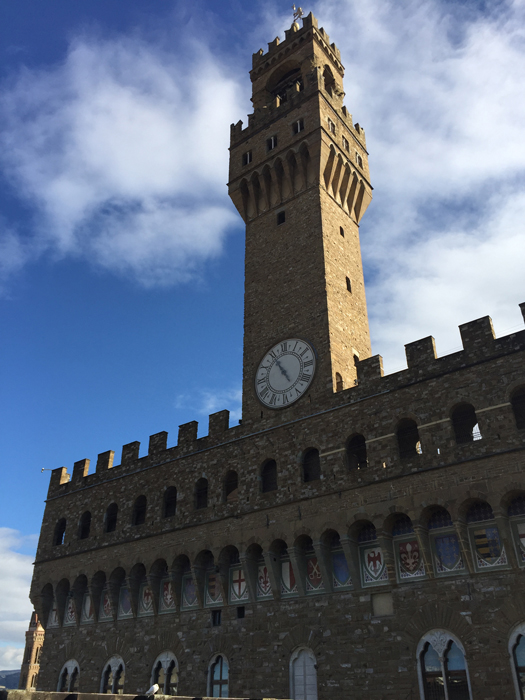 |
| View of the Palazzo Vecchio from the Uffizi terrace viewpoint. |
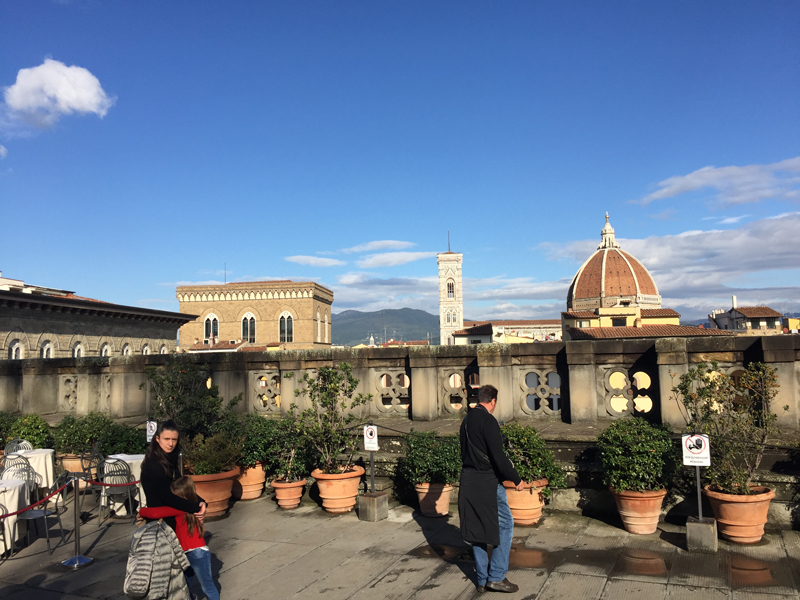 |
 |
| Madonna and Child with Saints - Rosso Fiorentino |
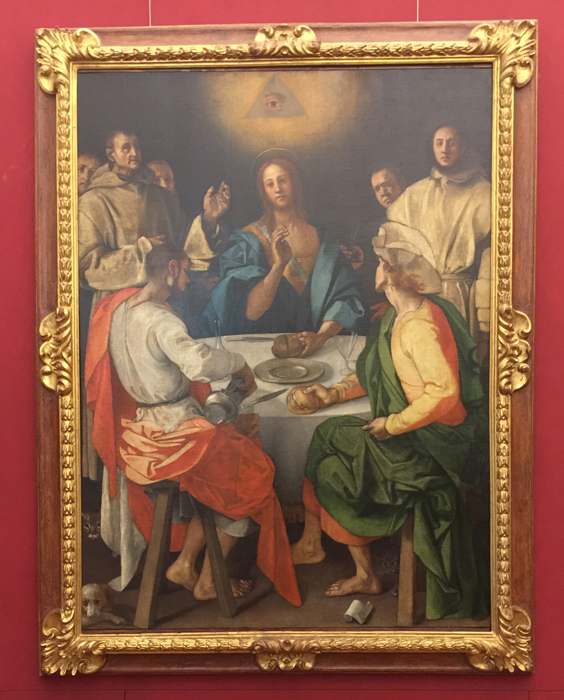 |
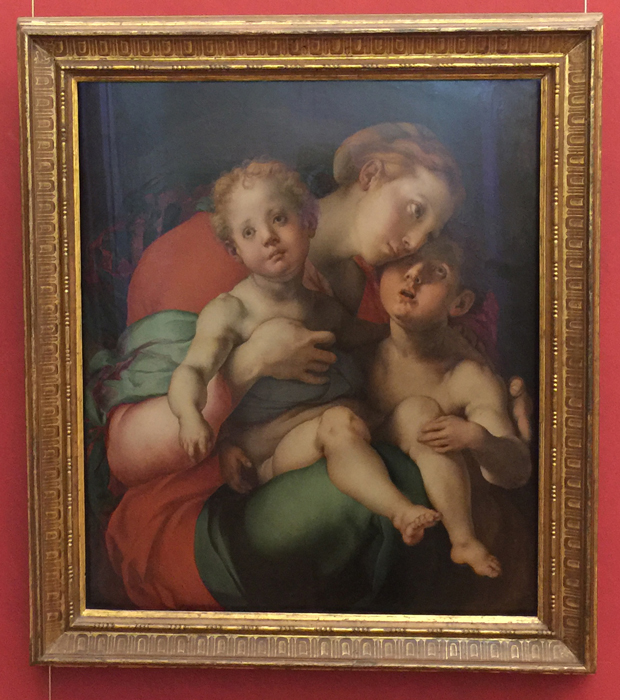 |
| Madonna and Child with the Young Saint John, Jacopo Carrucci. |
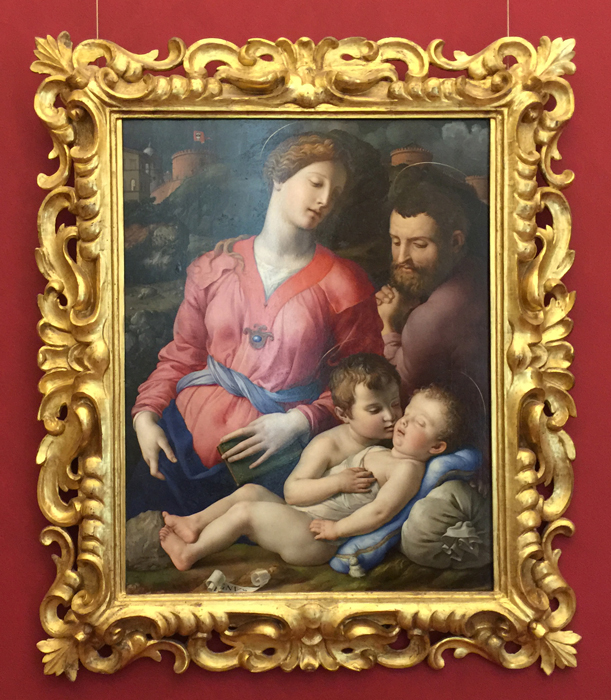 |
| The Panciatichi Holy Family, Bronzino Tori. |
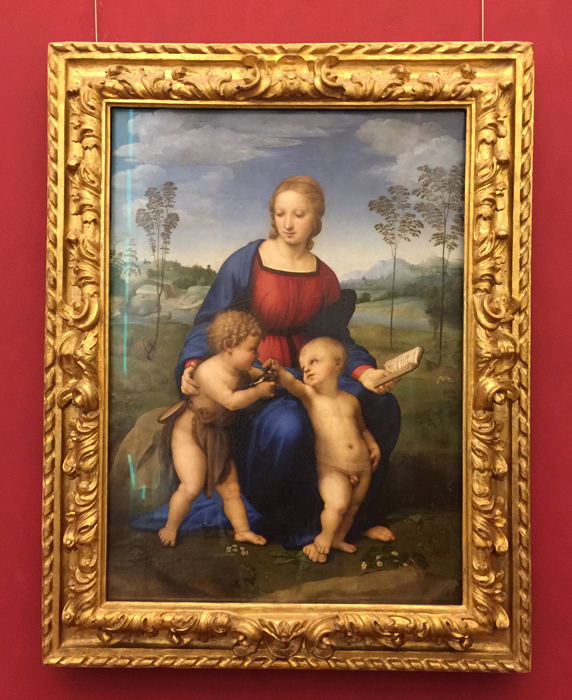 |
| Madonna of the Goldfinch, Rafael. |

|
| The Veiled Woman, Ridolfo del Ghirlandaio. |
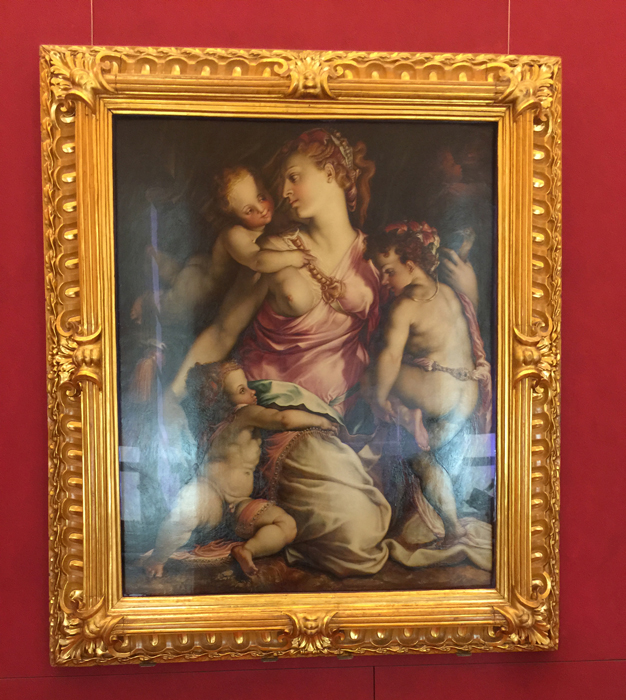 |
| Carita, Francesco Salviati. |
 |
| Madonna With Long Neck, also known as Madonna and Child with Angels and St. Jerome, Parmigianino. |
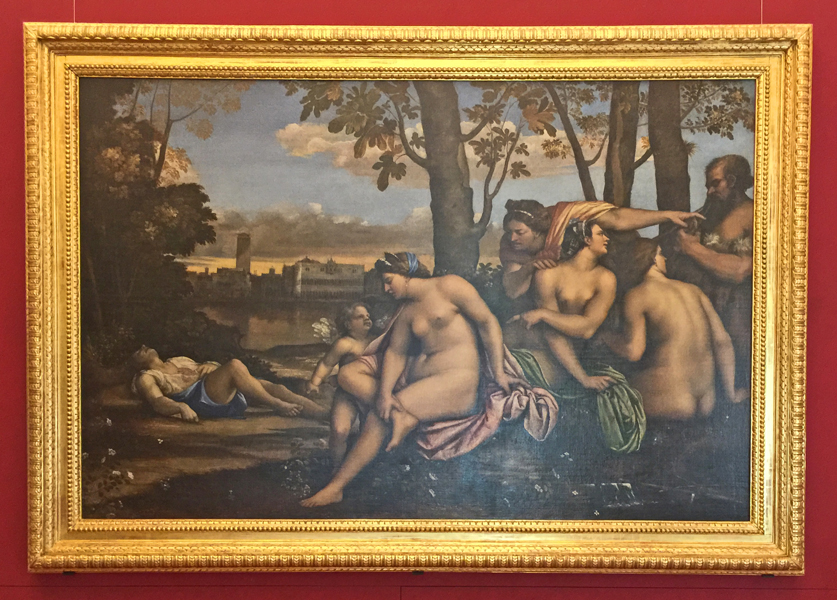 |
| Death of Adonis, 1512, by Sebastiano del Piombo. |
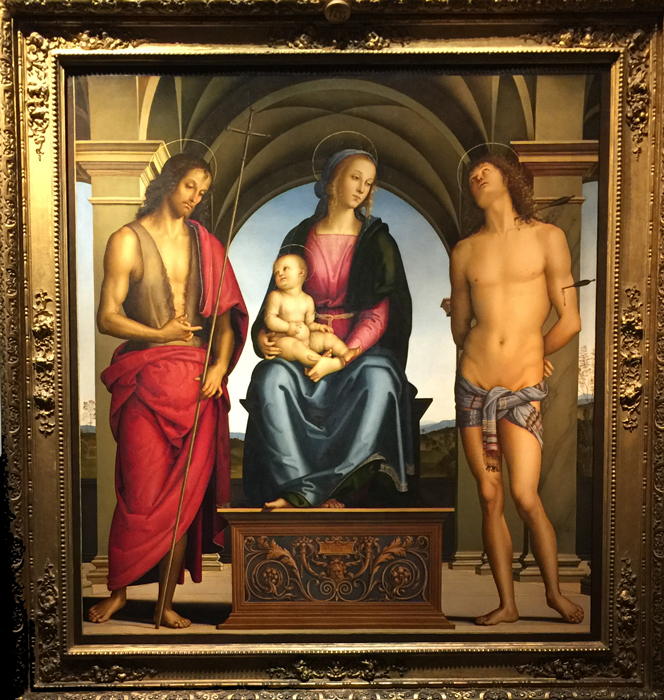 |
| Madonna with Child and Saints, Da Vinci. |
 |
| The Baptism of Christ, Andrea del Verrocchio, and his pupil Leonardo da Vinci. |
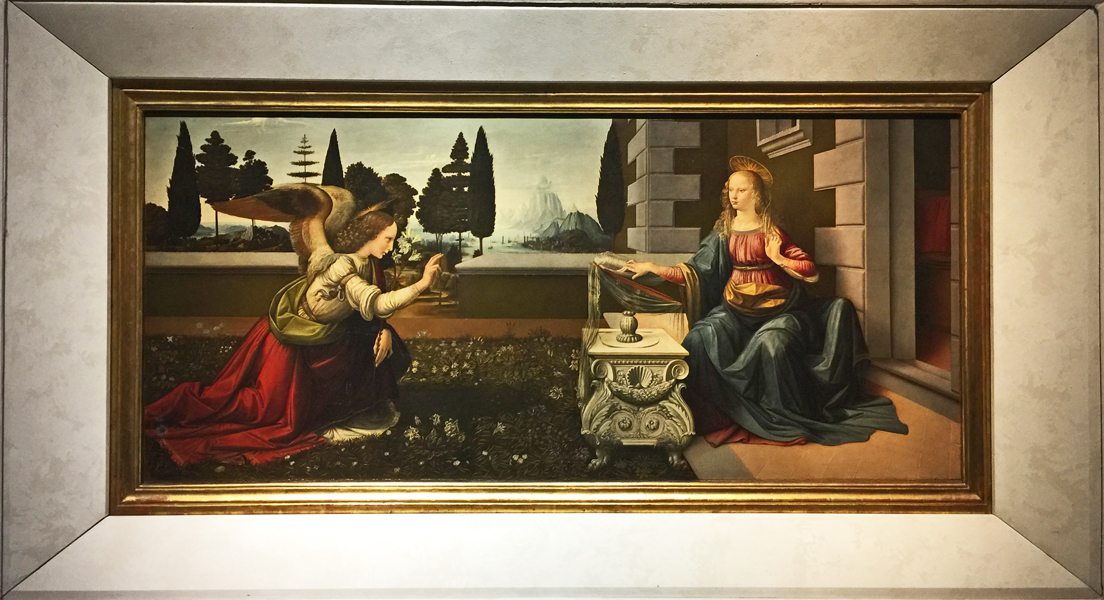 |
| The Annunciation, Leonardo Da Vinci. |
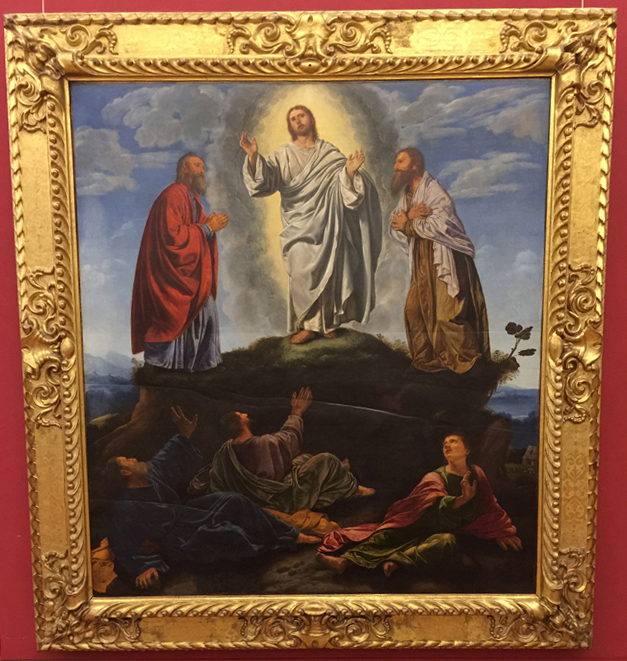 |
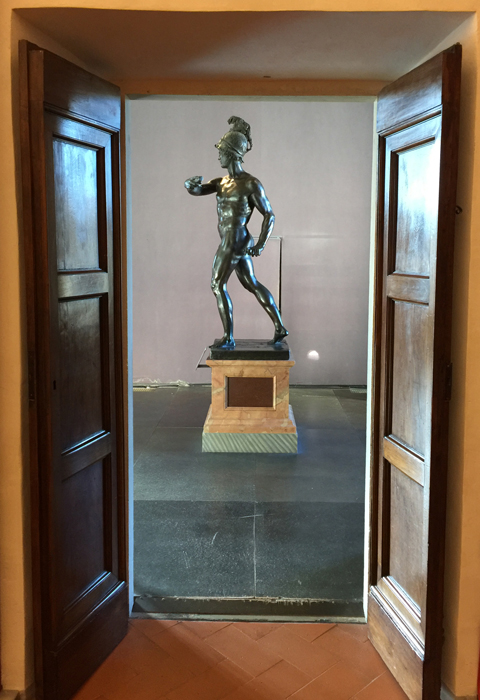
|
 |
| The
Medici Vase is a monumental marble bell-shaped krater sculpted in
Athens in the second half of the 1st century AD as a garden ornament
for the Roman market. |
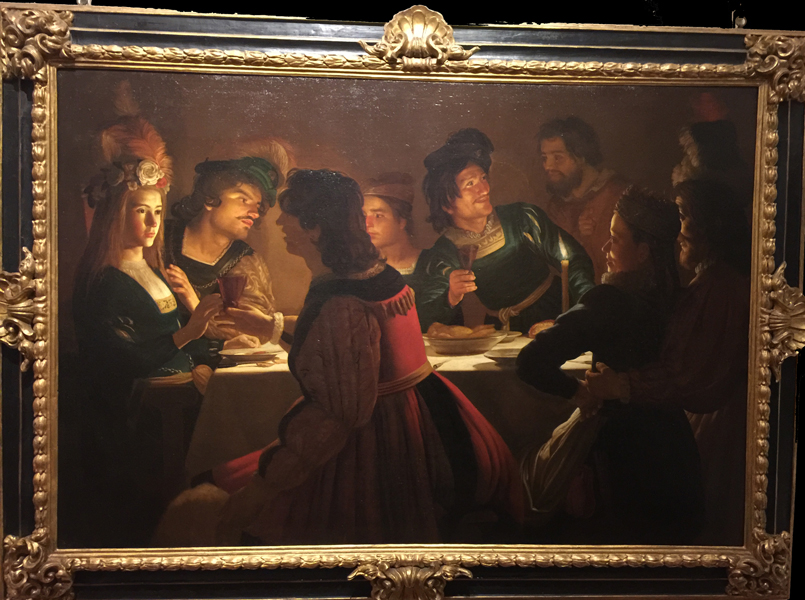 |
| The Wedding Supper, Gerrit Van Honthorst. |
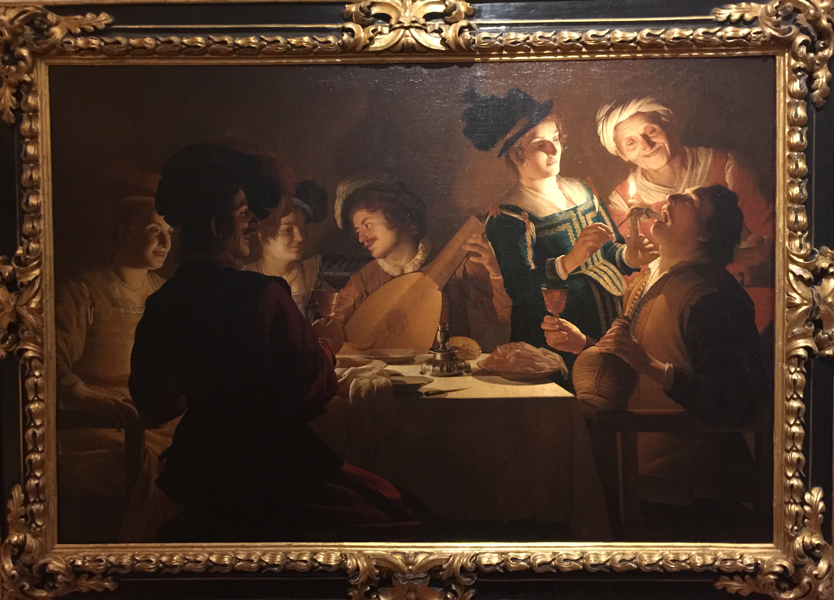 |
| Gerard (Gerrit) van Honthorst - Supper Party. |
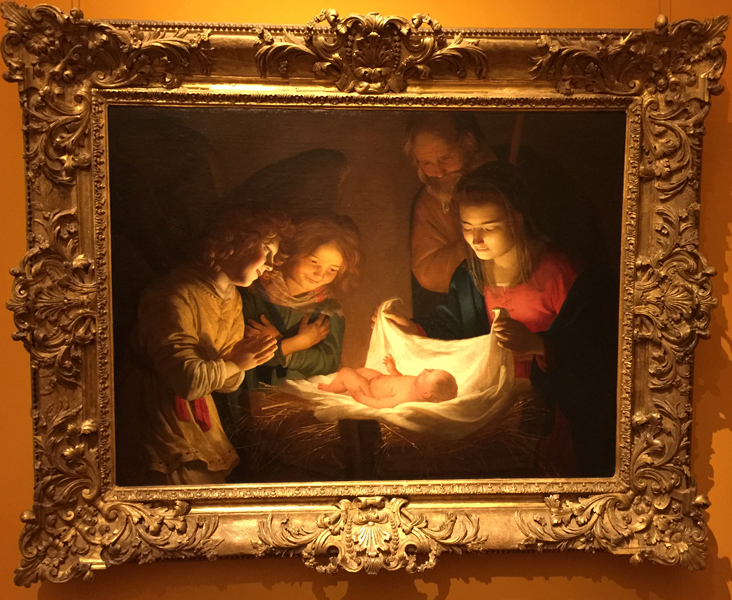 |
| Gerard (Gerrit) van Honthorst, Adoration of the Child. |
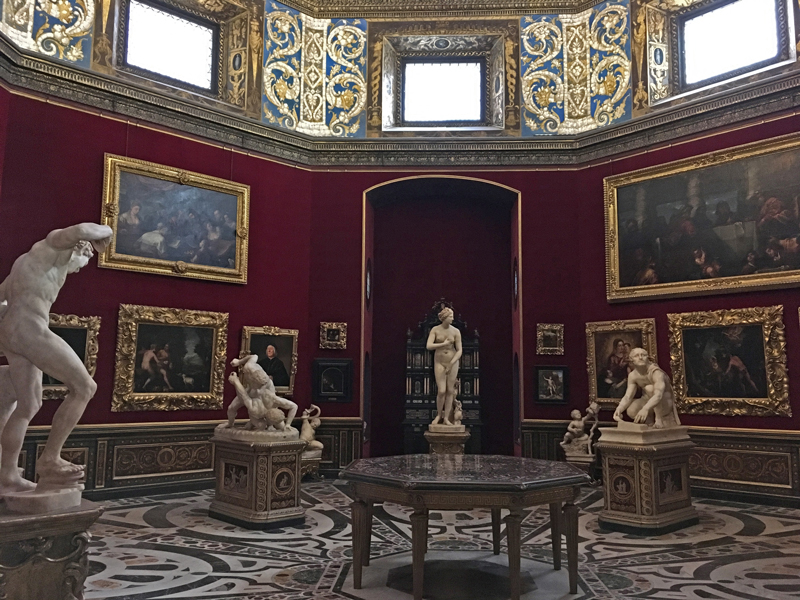 |
| The
octagonal room called Tribuna (Tribune) was commissioned by Francesco
I, son of Cosimo I de' Medici and completed around 1584 by the
architect Bernardo Buontalenti. |
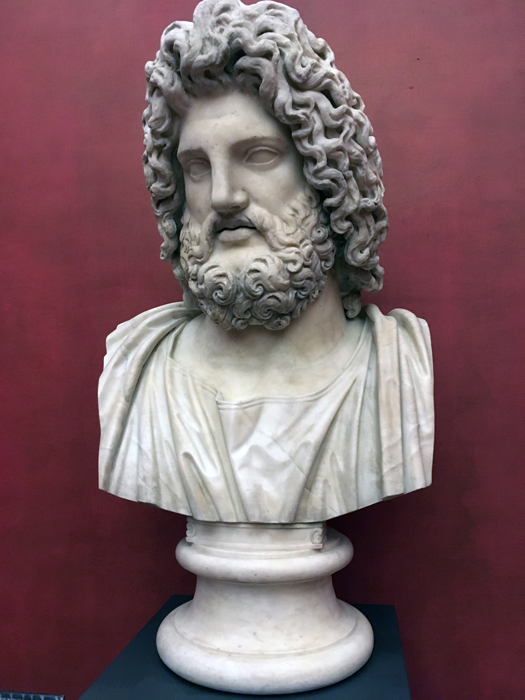 |
Back to Italy 2016 Index
Galleria dell'Accademia
Florence - Around the City
Il Duomo